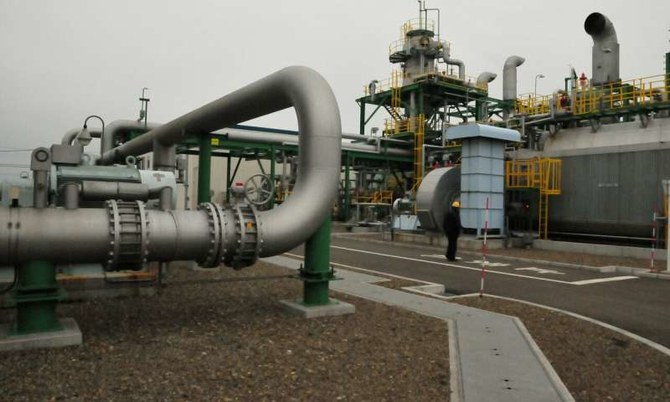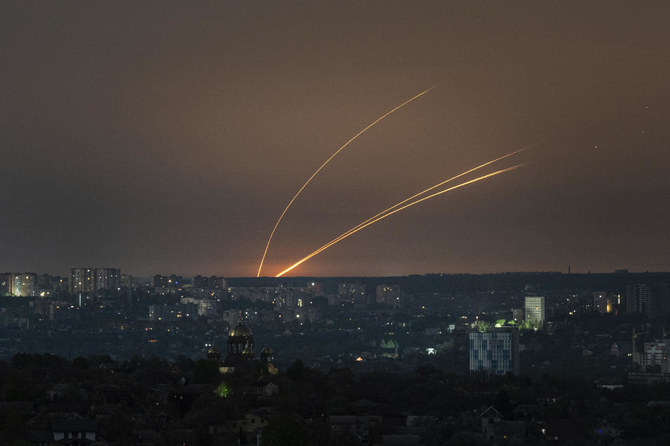DUBAI: Urgent steps must be taken if the fight to curb climate change is to have any chance of success, according to growing global scientific consensus.
Climate scientists say the situation has become untenable because current global carbon emissions — estimated to be 45 percent above pre-industrial levels — exceed the amount that nature can cope with.
Earlier this month, 11,000 scientists in 153 countries declared in a letter a climate emergency and warned that “untold human suffering” was unavoidable without huge shifts in human lifestyles.
“Clearly and unequivocally the planet is facing a climate emergency,” the scientists said, adding that they have a moral obligation to “clearly warn humanity of any catastrophic threat” and “tell it like it is.”
The letter, which was published in the journal BioScience, focused on six main objectives: Replacing fossil fuels, cutting pollutants such as methane and soot, restoring and protecting ecosystems, eating less meat, converting the economy to one that is carbon-free, and stabilizing population growth.
EXPONENTIALTECHNOLOGIES
- Artificial intelligence, augmented reality and virtual reality.
- Data science, digital biology and biotech.
- Medicine, nanotech and digital fabrication.
- Networks and computing systems.
- Robotics and autonomous vehicles.
The major transformations required — how global society functions and interacts with nature — were among issues addressed by a conference on technology held recently in Dubai.
Participating in a session entitled “Technology for Impact” at the EmTech MENA conference, scholars and lawmakers said only sustainability, collaboration and innovation can help ensure a smoother transition into the future.
“To be able to survive using the current resources, we would need 1.7 planet Earths,” said Sheikha Shamma bint Sultan bin Khalifa Al-Nahyan, founder and CEO of Alliances for Global Sustainability.
“If we add a growing population to that equation, we end up with an unimaginable scenario. The truth is harsh, but the situation might not be hopeless if we all contribute to halting climate change.”
Curbing the consumption patterns of our purchasing power will prove paramount in that shift, Sheikha Shamma said.
In her view, what is needed is a move away from a “throwaway society,” which is strongly influenced by consumerism, and an embrace of a “circular economy,” an economic system aimed at eliminating waste and the continual use of resources.
“Today, 143 million people are at risk of becoming climate migrants,” she said, appealing for greater understanding and empathy. “For them, redefining borders could be vital for their survival.”
Climate change is believed to a key driver of migration in Africa. Experts think the continent’s development challenges — running the gamut from farming and health care to water management and supporting small businesses — are almost all related to sustainability.
According to research by the European Council on Foreign Relations, Africa is highly dependent on natural resources and agriculture, which are the first assets to be undermined by climate change.
It has poor climate-resilient infrastructure, such as flood defenses. Africa countries are often characterized by weak institutions, which are less able to adapt to climate change. Finally, Africa’s high poverty rate undermines the resilience of local populations to massive changes in society.
“Our role is to think about how ‘exponential technologies’ can be harnessed to solve Africa’s issues,” said Solomon Assefa, vice president of Africa and emerging market solutions at IBM Research, referring to technologies such as artificial intelligence and robotics.
“We hired a lot of scientists and engineers from around the world in African labs to think about these problems and we found that we focused on sustainability because it is a global problem today.”
Speaking at the EmTech MENA conference, Assefa said that, on the one hand, Africa is paying a high price for unsustainable development: 8 to 10 million people are dying annually from air pollution, species loss is expected to cross the 1 million mark in the next 10 years and large parts of the continent are water insecure.
On the other hand, Assefa said, artificial intelligence, blockchain, quantum computing and the “Internet of Things” could turn out to be the technologies that can help the continent address each problem.
He added that by 2050, a number of innovations is expected to emerge from Africa in areas such as agriculture, water management, new types of fertilizers and food security.
“We’re realizing when we’re solving these problems that we’re getting a lot of interesting scientific insights,” Assefa said, adding that “the scientific discoveries could have a significant impact later on.”
Incidentally, the group of scientists warning of a “climate emergency” said that despite the gloomy outlook there is room for optimism.
On the downside, they pointed out some negative trends such as rising meat consumption, more air travel, accelerating rates of deforestation and an increase in global carbon dioxide emissions. But on the bright side, they said: “We are encouraged by a recent surge of concern. Governmental bodies are making climate emergency declarations. Schoolchildren are striking.
“Ecocide lawsuits are proceeding in the courts. Grassroots citizen movements are demanding change, and many countries, states and provinces, cities and businesses are responding.”
One of the ways in which businesses are responding to the challenge of climate change is through technological innovation.
Carbon capture and storage — the process of capturing wasteful carbon dioxide from its source and depositing it where it will not enter the atmosphere — has been described as a promising solution, with the latest technologies able to capture up to 30 percent of carbon dioxide and 75 percent of hydrogen sulfide.
There has also been a commitment by the global aviation industry — which is believed to produce up to 2 percent of all human-induced carbon dioxide emissions — to halving its 2005 emission levels by 2050.
Pledges have also been made by numerous companies to reduce their carbon footprint through such steps as purchasing new electric vehicles, investing in reforestation projects, and setting a target of 100 percent renewable energy use.
As Sheikha Shamma told the EmTech MENA conference, “the changes we need to make are often viewed in terms of cost, burden, blame and disaster rather than opportunity, intervention, partnership and collaboration.
“Dealing with climate change will affect all of us, forcing us to think beyond our borders because nature has no borders.”






















